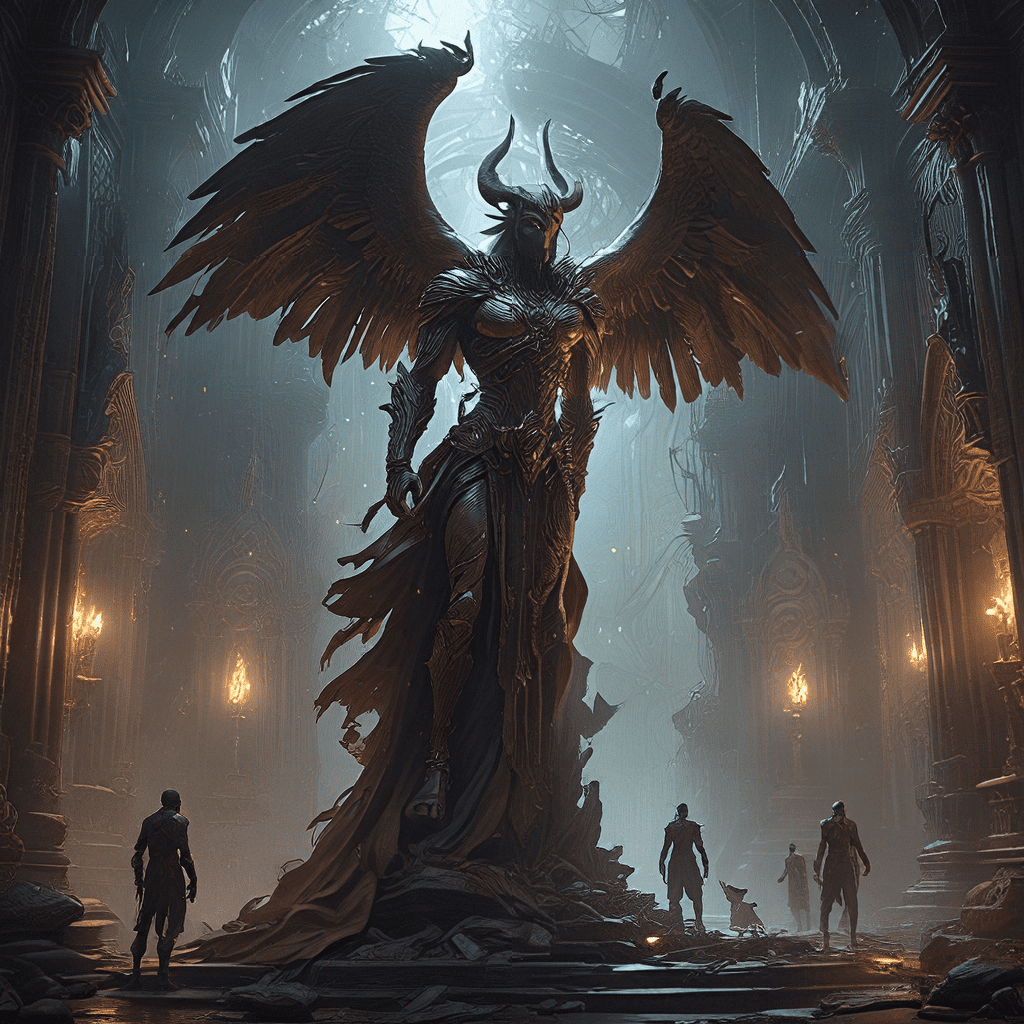The Gatekeepers of Amenti: Exploring the Guardians of the Underworld
1. Amenti: The Egyptian Underworld
In ancient Egyptian beliefs, the afterlife was a realm of great mystery and wonder, known as Amenti. It was a place where the dead were judged and their destinies determined. Amenti was not a realm of punishment, but rather a place of transformation and renewal. The journey to Amenti was a perilous one, filled with challenges and tests that the deceased had to overcome. It was a place where the dead were guided by powerful deities and spirits who served as guardians, ensuring that only those who were worthy of eternal life could enter.
2. The Journey to Amenti
The journey to Amenti began with the death of an individual. The body underwent a complex process of preservation through mummification. The ancient Egyptians believed that the soul, or “ka,” would need a physical form to continue its journey through the afterlife. The soul would then be weighed against the feather of Maat, the goddess of truth and justice.
This weighing ceremony, known as the “Weighing of the Heart,” was a crucial step. The heart was seen as the seat of one’s character and actions. If the heart was lighter than the feather, it meant the person had lived a just and moral life, and they would be allowed to enter Amenti. If the heart was heavier, it would be devoured by Ammit, the devourer of the dead, and their soul would cease to exist.
The concept of Maat was central to the Egyptian’s view of the afterlife. Maat represented order, harmony, and justice. A just life lived in accordance with Maat’s principles ensured a righteous journey to Amenti.
3. The Gatekeepers: A Diverse Cast of Guardians
The path to Amenti was guarded by numerous deities and spirits. These guardians represented different aspects of life, death, and the afterlife. They served as protectors and judges, ensuring that only those who were worthy could reach the final destination. The guardians of Amenti presented a varied and complex cast, each with a unique role and purpose.
4. The “Weighing of the Heart” Guardian: Anubis
Anubis, the jackal-headed god, was the guardian of the “Weighing of the Heart” ceremony. His role was crucial in determining the fate of the deceased. His jackal head symbolized his connection to the underworld and his ability to guide the dead. Anubis’ association with funerals and mummification reinforces his role as the protector of the dead. He ensured a fair and impartial weighing of the heart, a critical factor in deciding the deceased’s destiny.
5. The Gatekeeper of the Duat: Ammit
Ammit, the devourer of hearts, was a terrifying creature whose presence signified the ultimate consequence of failing the “Weighing of the Heart.” This monstrous being, often depicted with the head of a crocodile, the forelegs of a lion, and the hindquarters of a hippopotamus, instilled fear and dread in the hearts of the dead. She stood as a stark reminder of the consequences of a life filled with wrongdoing. The fear of Ammit was instrumental in encouraging a life of righteousness and compassion.
6. The Guardians of the Halls: The Forty-Two Judges
The Forty-Two Judges were a council of deities who presided over the “Hall of Two Truths” in Amenti. They represented different aspects of Maat and would question the deceased about their life and actions. They were responsible for scrutinizing the soul’s journey, ensuring that the deceased had lived a moral life in accordance with Maat’s principles. Each judge held a specific role, ensuring a comprehensive examination of the soul’s conduct. Their presence served as a constant reminder that actions, both good and bad, would be accounted for in the afterlife.
7. The Gatekeeper of the Sun’s Journey: Ra
Ra, the sun god, played a vital role in the journey to Amenti. His daily journey across the sky symbolized the cycle of life and death. The deceased had to pass through the underworld, which was a perilous journey mirroring the sun’s nightly passage through the Duat, the underworld. As the sun god, Ra was seen as a protector and guide for the deceased on this journey. His presence assured the deceased that their passage through Amenti was safe, a journey towards eternal life.
8. The Guardians of the Sacred Lake: The Four Sons of Horus
The Four Sons of Horus were the guardians of the sacred lake in Amenti. They represented the protection and guidance offered to the deceased in the afterlife. Each son represented a different part of the body, symbolizing the deceased’s holistic journey through the afterlife. They were instrumental in ensuring the deceased’s safe passage through Amenti, offering their guidance and protection in a journey fraught with challenges. The presence of the Four Sons of Horus provided comfort and reassurance to the deceased during their final journey.
9. The Guardian of the Final Destination: Osiris
Osiris, the king of the underworld, was the ultimate guardian of Amenti. He was the judge of the dead and the one who decided who would be granted eternal life. He was the embodiment of justice and resurrection, offering the promise of a new existence in Amenti. The deceased’s journey to Amenti was ultimately a pilgrimage to Osiris’ court, where they would be judged and granted eternal life. Osiris’ presence in Amenti symbolized the hope of a new beginning and the promise of a brighter future.
10. The Legacy of the Gatekeepers
The Gatekeepers of Amenti, from Anubis to Osiris, played a crucial role in shaping Egyptian beliefs about the afterlife. They were not just protectors and judges; they were embodiments of the principles that governed the journey to Amenti. They ensured that the deceased’s actions and character were recognized, and they provided guidance and protection along the way. Through their stories and symbolism, the Gatekeepers continue to fascinate and inspire us, offering a glimpse into a world where death was not an end, but a new beginning.




